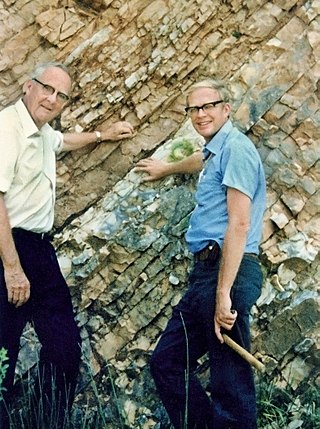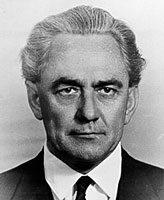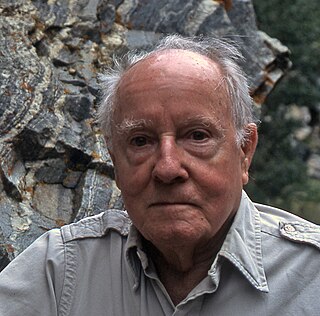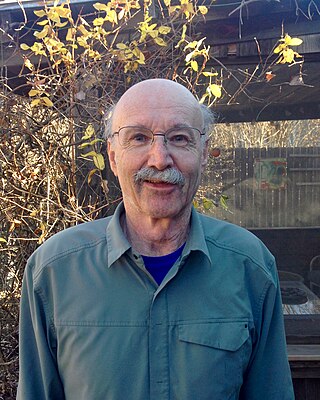Continental drift is the hypothesis that the Earth's continents have moved over geologic time relative to each other, thus appearing to have "drifted" across the ocean bed. The idea of continental drift has been subsumed into the science of plate tectonics, which studies the movement of the continents as they ride on plates of the Earth's lithosphere.

Plate tectonics is the scientific theory that Earth's lithosphere comprises a number of large tectonic plates which have been slowly moving since about 3.4 billion years ago. The model builds on the concept of continental drift, an idea developed during the first decades of the 20th century. Plate tectonics came to be accepted by geoscientists after seafloor spreading was validated in the mid-to-late 1960s.

Orogeny is a mountain building process that takes place at a convergent plate margin when plate motion compresses the margin. An orogenic belt or orogen develops as the compressed plate crumples and is uplifted to form one or more mountain ranges. This involves a series of geological processes collectively called orogenesis. These include both structural deformation of existing continental crust and the creation of new continental crust through volcanism. Magma rising in the orogen carries less dense material upwards while leaving more dense material behind, resulting in compositional differentiation of Earth's lithosphere. A synorogenic process or event is one that occurs during an orogeny.

Walter Alvarez is a professor in the Earth and Planetary Science department at the University of California, Berkeley. He is most widely known for the theory that dinosaurs were killed by an asteroid impact, developed in collaboration with his father, Nobel Prize–winning physicist Luis Alvarez.

Paleomagnetism is the study of magnetic fields recorded in rocks, sediment, or archeological materials. Geophysicists who specialize in paleomagnetism are called paleomagnetists.

John Tuzo Wilson was a Canadian geophysicist and geologist who achieved worldwide acclaim for his contributions to the theory of plate tectonics.
Allan Verne Cox was an American geophysicist. His work on dating geomagnetic reversals, with Richard Doell and Brent Dalrymple, made a major contribution to the theory of plate tectonics. Allan Cox won numerous awards, including the prestigious Vetlesen Prize, and was the president of the American Geophysical Union. He was the author of over a hundred scientific papers, and the author or editor of two books on plate tectonics. On January 27, 1987, Cox died in an apparent suicide.

A geosyncline is an obsolete geological concept to explain orogens, which was developed in the late 19th and early 20th centuries, before the theory of plate tectonics was envisaged. A geosyncline was described as a giant downward fold in the Earth's crust, with associated upward folds called geanticlines, that preceded the climax phase of orogenic deformation.

The expanding Earth or growing Earth hypothesis argues that the position and relative movement of continents is due at least partially to the volume of Earth increasing. Conversely, geophysical global cooling was the hypothesis that various features could be explained by Earth contracting.

Samuel Warren Carey AO was an Australian geologist and a professor at the University of Tasmania. He was an early advocate of the theory of continental drift. His work on plate tectonics reconstructions led him to develop the Expanding Earth hypothesis.
Walter Clarkson Pitman III was an American geophysicist and a professor emeritus at Columbia University. His measurements of magnetic anomalies on the ocean floor supported the Morley–Vine–Matthews hypothesis explaining seafloor spreading. With William Ryan, he developed the Black Sea deluge theory. Among his major awards are the Alexander Agassiz Medal and the Vetlesen Prize.

The geological history of Earth follows the major geological events in Earth's past based on the geological time scale, a system of chronological measurement based on the study of the planet's rock layers (stratigraphy). Earth formed about 4.54 billion years ago by accretion from the solar nebula, a disk-shaped mass of dust and gas left over from the formation of the Sun, which also created the rest of the Solar System.

Pangaea or Pangea was a supercontinent that existed during the late Paleozoic and early Mesozoic eras. It assembled from the earlier continental units of Gondwana, Euramerica and Siberia during the Carboniferous approximately 335 million years ago, and began to break apart about 200 million years ago, at the end of the Triassic and beginning of the Jurassic. In contrast to the present Earth and its distribution of continental mass, Pangaea was centred on the equator and surrounded by the superocean Panthalassa and the Paleo-Tethys and subsequent Tethys Oceans. Pangaea is the most recent supercontinent to have existed and the first to be reconstructed by geologists.
The tetrahedral hypothesis is an obsolete scientific theory attempting to explain the arrangement of the Earth's continents and oceans by referring to the geometry of a tetrahedron. Although it was a historically interesting theory in the late 19th and early 20th century, it was superseded by the concepts of continental drift and modern plate tectonics. The theory was first proposed by William Lowthian Green in 1875.
The evolution of tectonophysics is closely linked to the history of the continental drift and plate tectonics hypotheses. The continental drift/ Airy-Heiskanen isostasy hypothesis had many flaws and scarce data. The fixist/ Pratt-Hayford isostasy, the contracting Earth and the expanding Earth concepts had many flaws as well.
The evolution of tectonophysics is closely linked to the history of the continental drift and plate tectonics hypotheses. The continental drift/ Airy-Heiskanen isostasy hypothesis had many flaws and scarce data. The fixist/ Pratt-Hayford isostasy, the contracting Earth and the expanding Earth concepts had many flaws as well.

Warren B. Hamilton was an American geologist known for integrating observed geology and geophysics into planetary-scale syntheses describing the dynamic and petrologic evolution of Earth's crust and mantle. His primary career (1952–1995) was as a research scientist with the US Geological Survey (USGS) in geologic, then geophysical, branches. After retirement, he became a Distinguished Senior Scientist in the Department of Geophysics, Colorado School of Mines (CSM). He was a member of the National Academy of Sciences, and a holder of the Penrose Medal, highest honor of the Geological Society of America (GSA). Hamilton served in the US Navy from 1943 to 1946, completed a bachelor's degree at the University of California, Los Angeles (UCLA) in a Navy training program in 1945, and was a commissioned officer on the aircraft carrier USS Tarawa. After returning to civilian life, he earned an MSc in geology from the University of Southern California in 1949, and a PhD in geology from UCLA in 1951. He married Alicita V. Koenig (1926–2015) in 1947. Hamilton died in October 2018 at the age of 93; until the last few weeks he was working on new research. His final paper, "Toward a myth-free geodynamic history of Earth and its neighbors," was published posthumously (2019) in Earth-Science Reviews. In 2022 the Geological Society of America published an edited volume in his honor, with 33 papers: In the Footsteps of Warren B. Hamilton: New Ideas in Earth Science. The first chapter of this book describes how Hamilton's last paper was written; the second applies Thomas Kuhn's model of scientific change to interpreting Hamilton's career.
Donald Lawson Turcotte is an American geophysicist most noted for his work on the boundary layer theory of mantle convection as part of the theory of plate tectonics. He works at the University of California, Davis.
The Plate Tectonics Revolution was the scientific and cultural change which developed from the acceptance of the plate tectonics theory. The event was a paradigm shift and scientific revolution.

Henry Robert Frankel was an American philosopher and historian of science noted for his historical and philosophical analysis of the continental drift controversy and subsequent discovery of plate tectonics. He was emeritus professor at the University of Missouri, Kansas City. Frankel earned his Bachelor of Arts from Oberlin College and his PhD from the Ohio State University.











